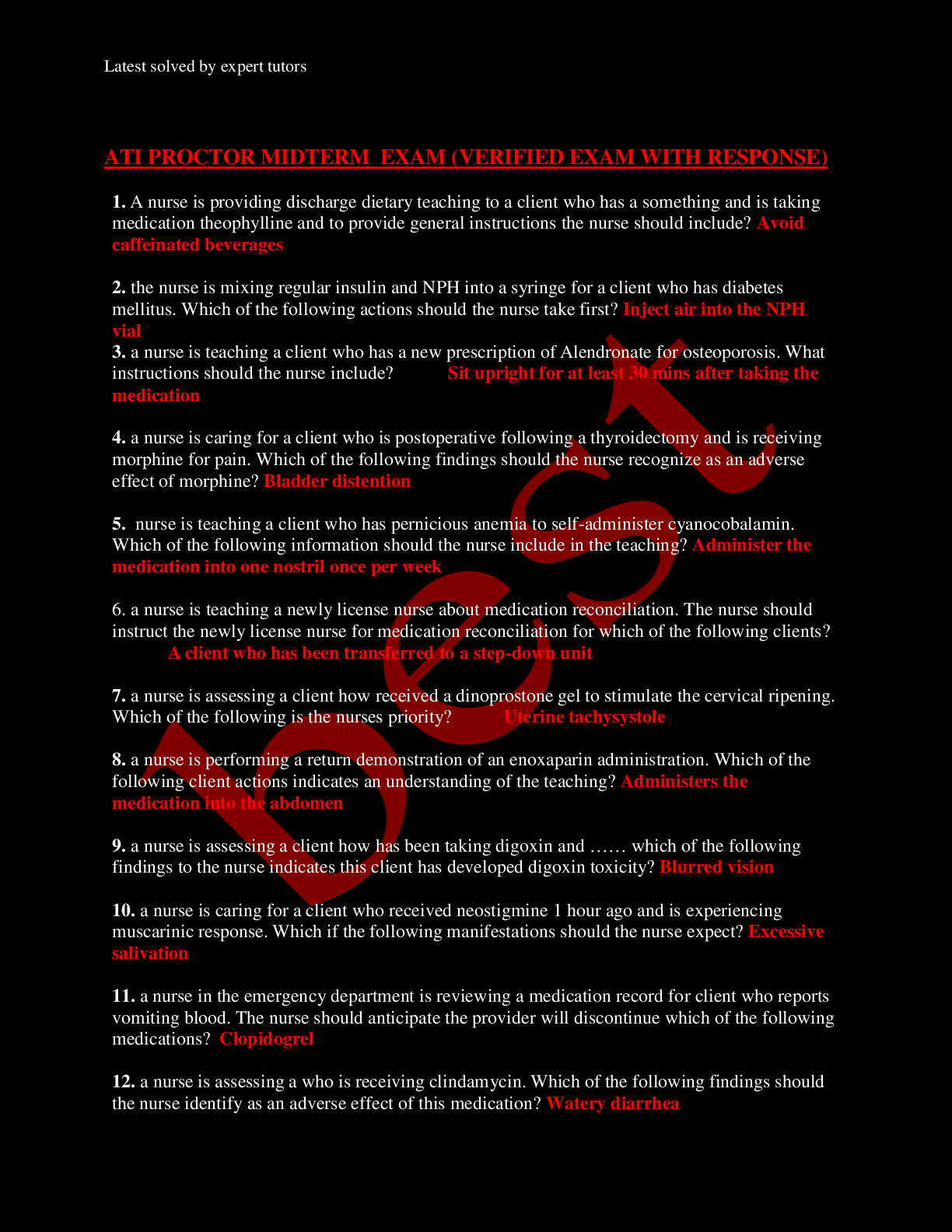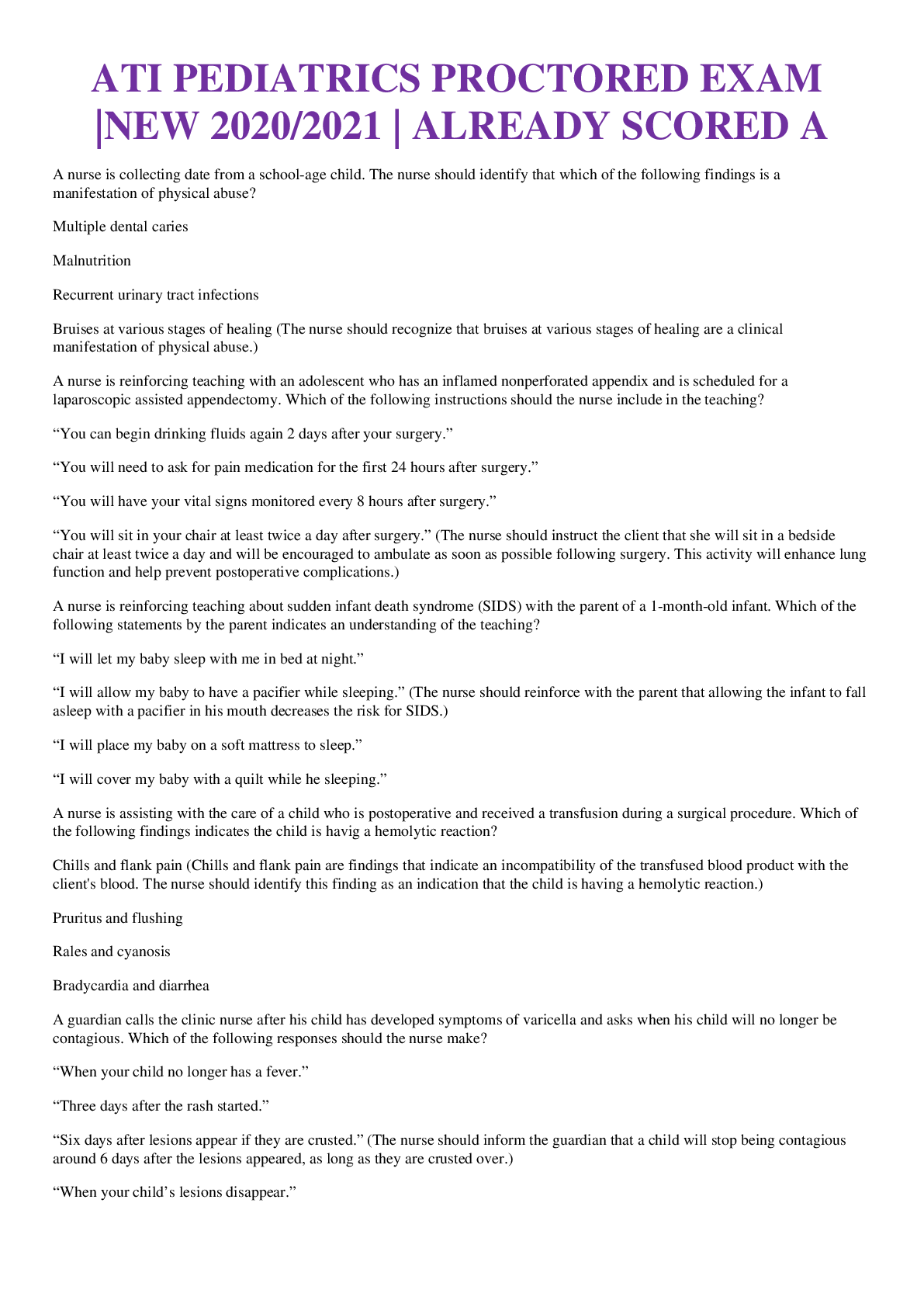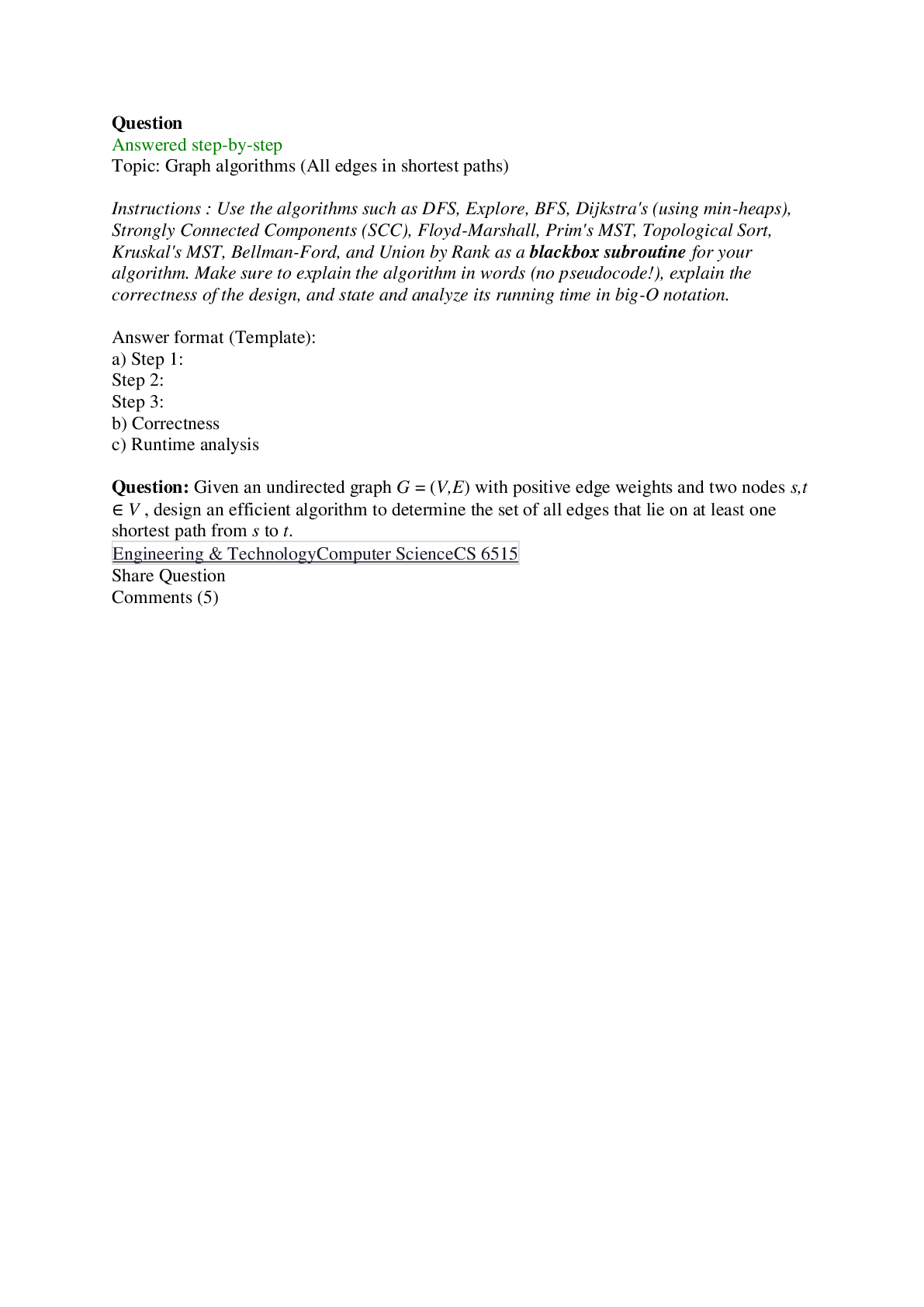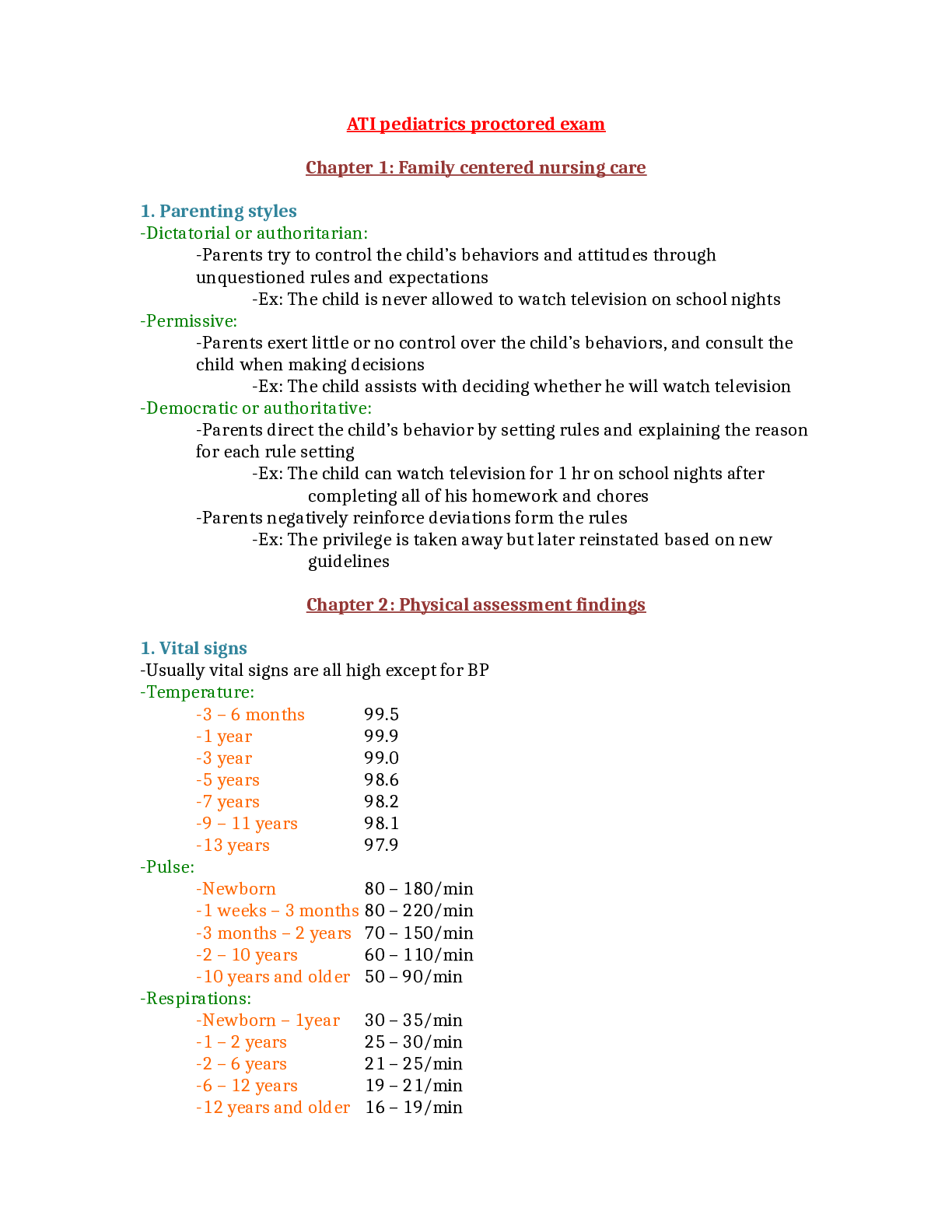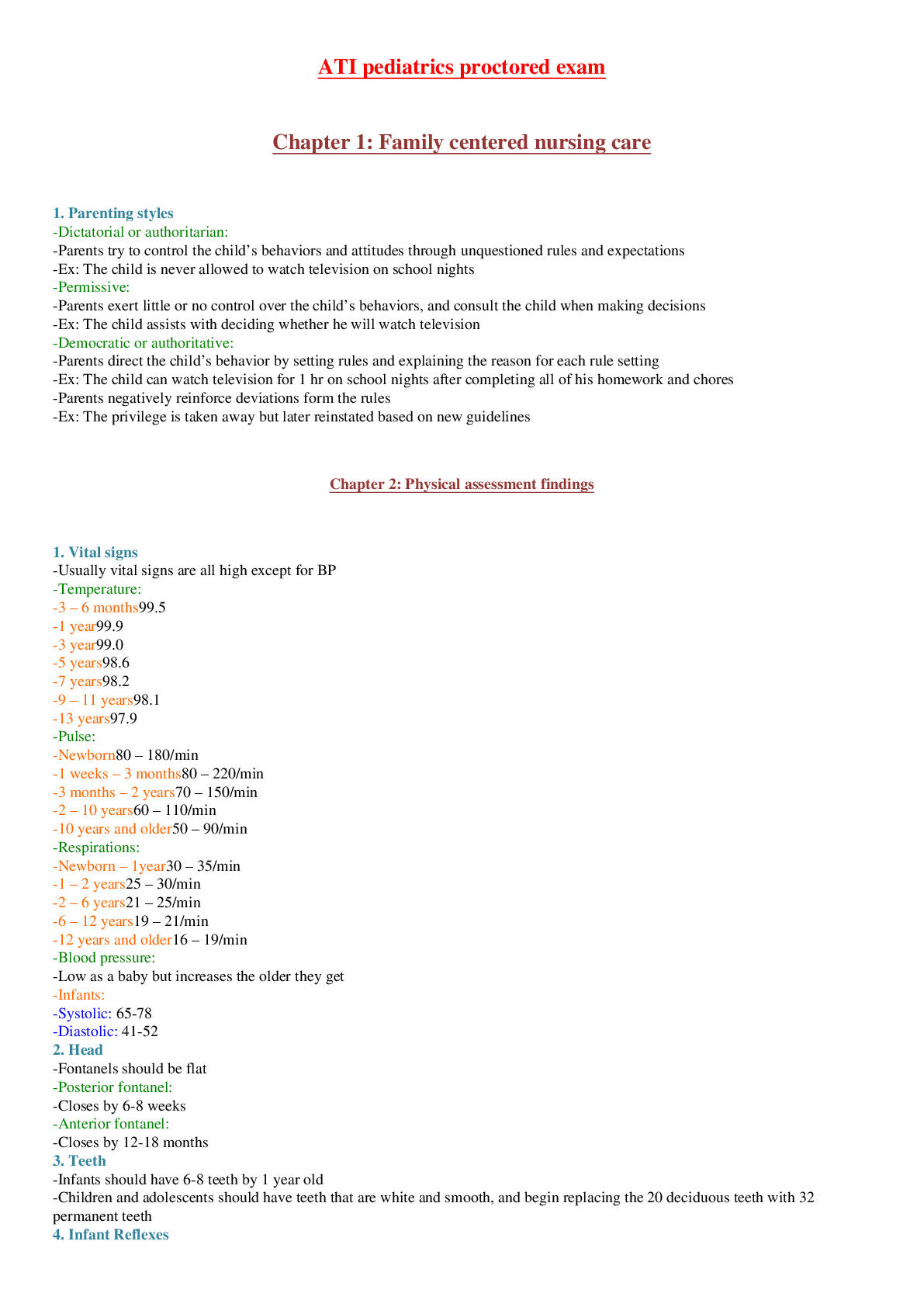*NURSING > EXAM PROCTORED > ATI RN PEDIATRICS PROCTORED EXAM | Download To SCore An A+ | Chamberlain (All)
ATI RN PEDIATRICS PROCTORED EXAM | Download To SCore An A+ | Chamberlain
Document Content and Description Below
ATI RN PEDIATRICS PROCTORED EXAM 1. A nurse is preparing to assess a 4-year old child’s visual acuity. Which of the following actions should the nurse plan first? • Use a tumbling E chart for ... the assessment • Position the child 4.6 meters (15 feet) from the chart • Assess both eyes together first, then each eye separately • Test the child without glasses before testing with glasses 2. A nurse is providing discharge teaching to a parent of a child who has juvenile idiopathic arthritis and a new prescription of prednisone/etarnecept. Which of the following statement should the nurse include in the teaching? • “Discontinue this medication if gastrointestinal upset occurs.” • “Expect that this medication will stimulate a growth spurt.” • “Limit your child’s intake of potassium-rich foods.” • “Monitor your child for indications of infection.” 3. A nurse on a pediatric unit is caring for four children. The nurse should use droplet precautions for which of the following children? • An adolescent who has hepatitis A • A toddler who has seasonal influenza • A preschool-age child who has pediculosis capitis • A school-age child who has viral conjunctivitis 4. A nurse is providing teaching to an adolescent who has vulvovaginitis. Which of the following statements should the nurse include in the teaching? • “Apply a warm, moist compress three times per day.” • “Apply scented baby powder to absorb residual moisture.” • “Wear a feminine deodorant pad for vaginal drainage.” • “Wear nylon underwear at night.” 5. A nurse is creating a plan of care for a school-age child who has nephrotic syndrome. Which of the following interventions should the nurse include? (Select all that apply) • Provide a low-sodium diet • Encourage increased fluid intake • Assess for protein in the urine • Initiate contact precautions • Obtain a daily weight 1. A nurse is providing teaching to the parents of a school aged child who has ADHD. Which of the following instructions should the nurse include? a. Place the childs daily activities on an organizational chart 2. A nurse is caring for a child who has sickle cell anemia. Which of the following findings is a priority for the nurse to report to the provider? a. Facial twitching 3. A nurse in the PACU is caring for a school aged child immediately after a tonsillectomy. Which of the following actions should the nurse take? a. Place the child in a side lying position 4. A nurse in the ER is caring for an adolescent who was requesting testing for STIs. Which of the following actions is appropriate for the nurse to take? a. Obtain the written consent from the client 5. A nurse is providing teaching about medication administration to the parents of the toddler who has a new prescription for liquid ferrous sulfate. Which of the following instructions should the nurse include? a. Dilute the drops of water prior to administration 6. A nurse is providing dietary teaching to a parent of a 10-month-old infant who has phenylketonuria. Which of the following responses by the parent indicates an understanding of the teaching? a. I will steam carrots and will cut them into small pieces for her 7. a nurse is caring for a child who s 2 days post-op following an appendectomy due to the rupture of the appendix the childs NG tube is set to low intermittent suction. Which of the following indicates that the childs GI function has returned? a. The nurse auscultates bowel sounds 8. A nurse is providing teaching to the parent of an infant who has a diaper rash. Which of the following statements by the parents indicate an understanding of the teaching? a. I will use superabsorbent disposable diapers 1) Which is the rationale for why young children are more prone to otitis media that the nurse should include in the teaching session with a parent? 1. The eustachian tube is shorter, wider, and horizontal in younger children. 2. The eustachian tube is shorter, more narrow, and horizontal in younger children. 3. The eustachian tube is longer, wider, and vertical in younger children. 4. The eustachian tube is longer, more narrow, and vertical in younger children. 2) Which neonate requires a close nursing assessment for the development of retinopathy of prematurity (ROP)? 1. 28-weeks’-gestation infant who has been on long-term oxygen and weighed 1400 g 2. 32-weeks’-gestation infant of African heritage with a congenital heart defect who needed no oxygen and weighed 1850 g 3. 28-weeks’-gestation female infant who was on short-term oxygen, weighed 1420 g, and was treated with phototherapy 4. 36-weeks’-gestation, small-for-gestational-age infant who was in an oxyhood for 12 hours and weighed 1800 g 3) Which is the priority nursing assessment for a pediatric client who is postoperative for tonsillectomy? 1. Arrhythmias 2. Dehydration 3. Increased blood sugar 4. Increased urinary output 4) A neonate is diagnosed with a herpes simplex viral infection of the eye. Which medication should the nurse prepare to administer? 1. Oral erythromycin 2. Fluoroquinolone eyedrops or ointment 3. Parenteral acyclovir (Zovirax) and vidarabine (VIRA-A) ophthalmic ointment 4. Intravenous penicillin 5) A nurse is caring for a visually impaired 20-month-old client who has not begun to walk. Which nursing diagnosis would be appropriate for this child? 1. Self-care Deficit 2. Impaired Physical Mobility 3. Impaired Home Maintenance 4. Delayed Development 6) A nurse is caring for a visually impaired school-age child. Which is the priority nursing intervention during the admission process to the hospital? 1. Explaining playroom policies 2. Orienting the child to where furniture is placed in the room 3. Taking the child on a tour of the unit 4. Letting the child touch equipment that will be used during the child’s hospitalization 7) Which should the nurse include in the discharge instructions for the parents of an infant who is diagnosed with acute otitis media? 1. Keep the baby in a flat position during sleep. 2. Administer a decongestant. 3. Place the baby to sleep with a pacifier. 4. Administer acetaminophen (Tylenol) to relieve discomfort [Show More]
Last updated: 2 years ago
Preview 1 out of 13 pages
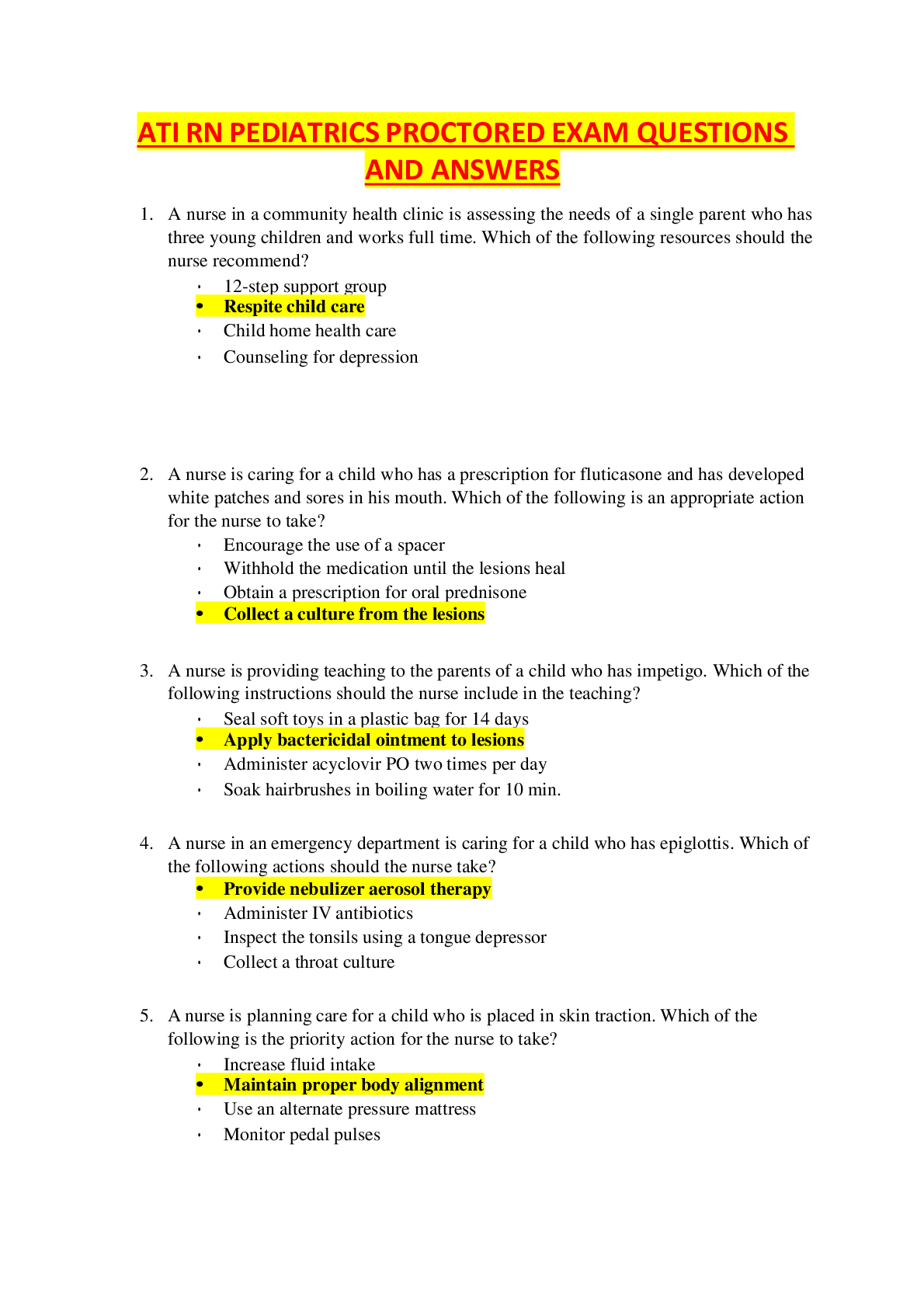
Buy this document to get the full access instantly
Instant Download Access after purchase
Buy NowInstant download
We Accept:

Reviews( 0 )
$10.00
Can't find what you want? Try our AI powered Search
Document information
Connected school, study & course
About the document
Uploaded On
Mar 16, 2021
Number of pages
13
Written in
Additional information
This document has been written for:
Uploaded
Mar 16, 2021
Downloads
0
Views
149

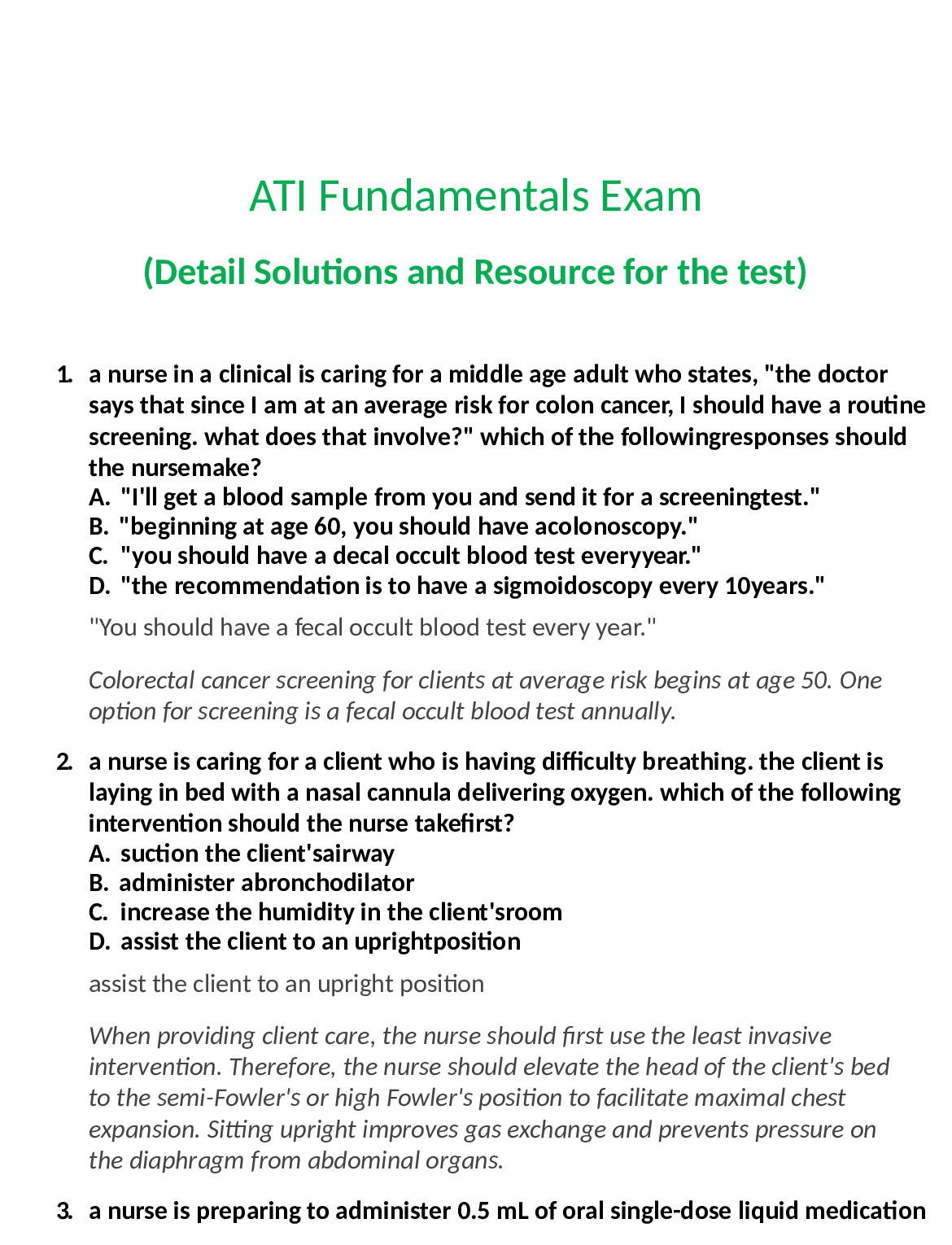

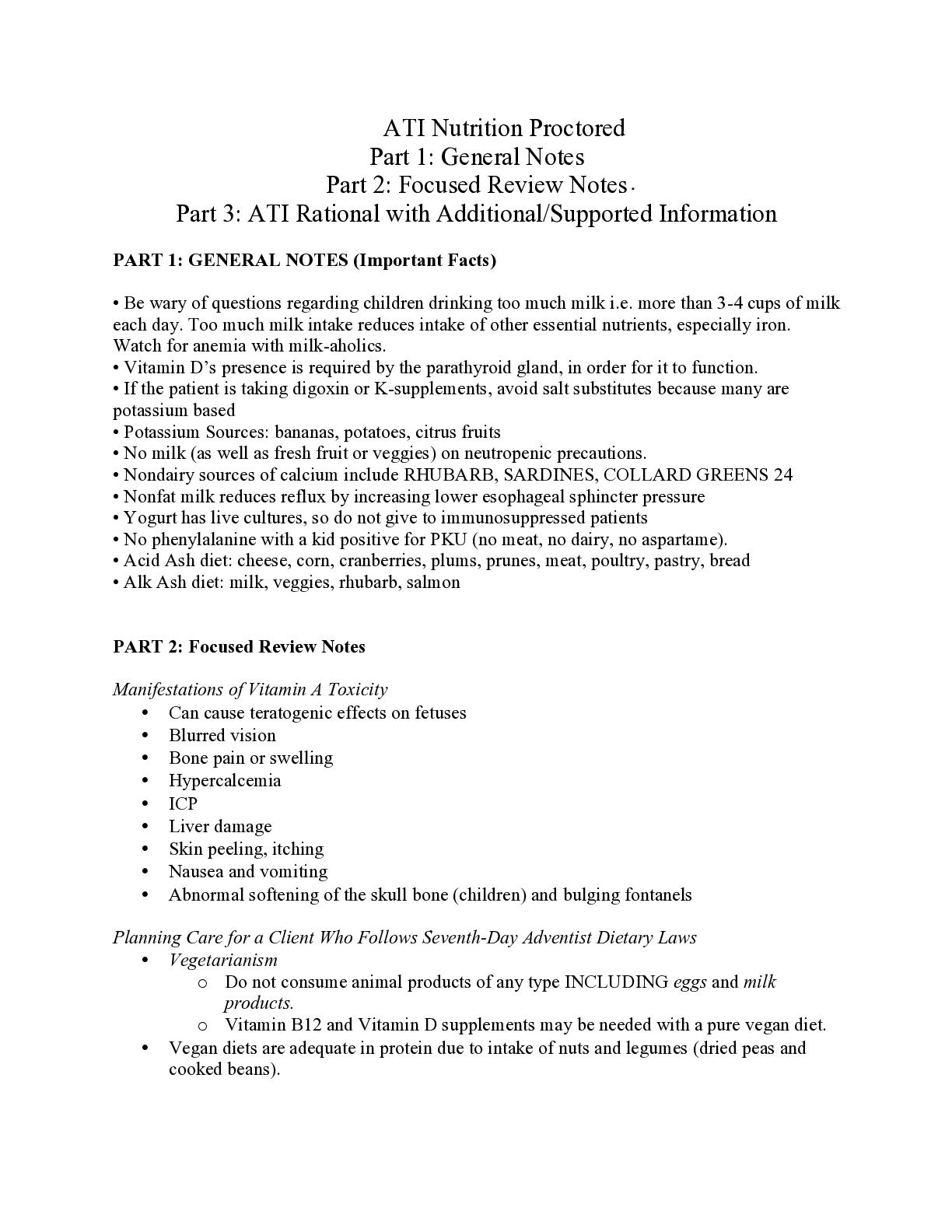
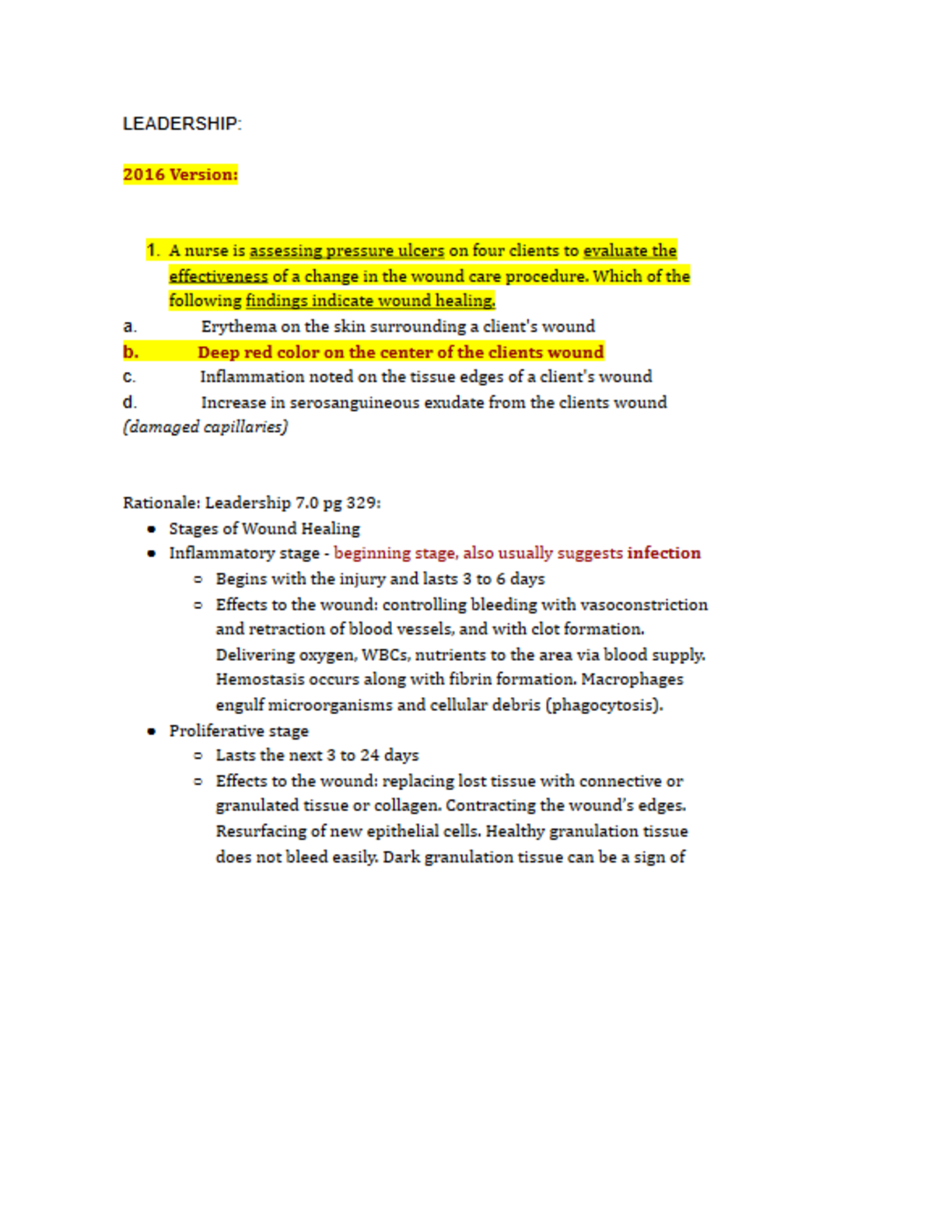

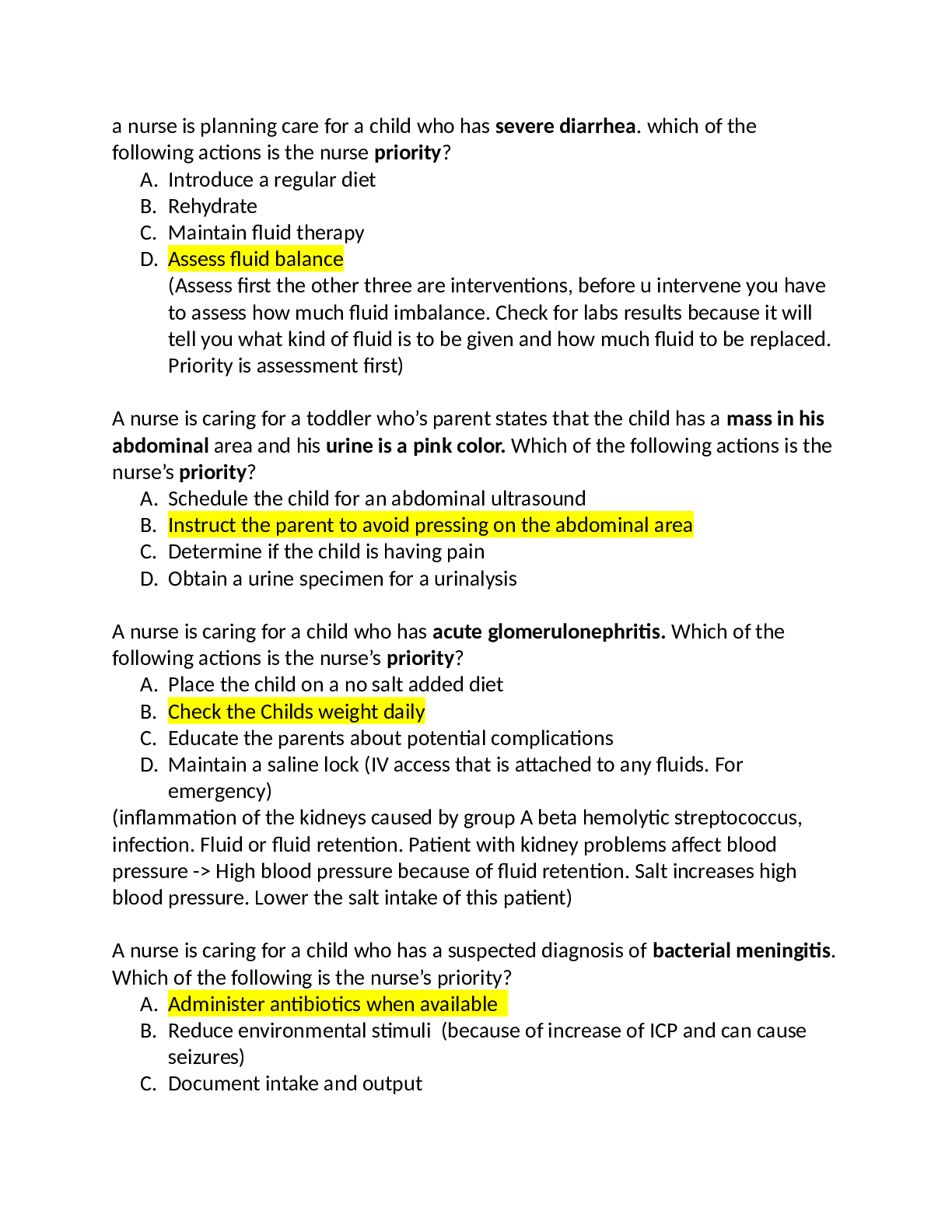
.png)
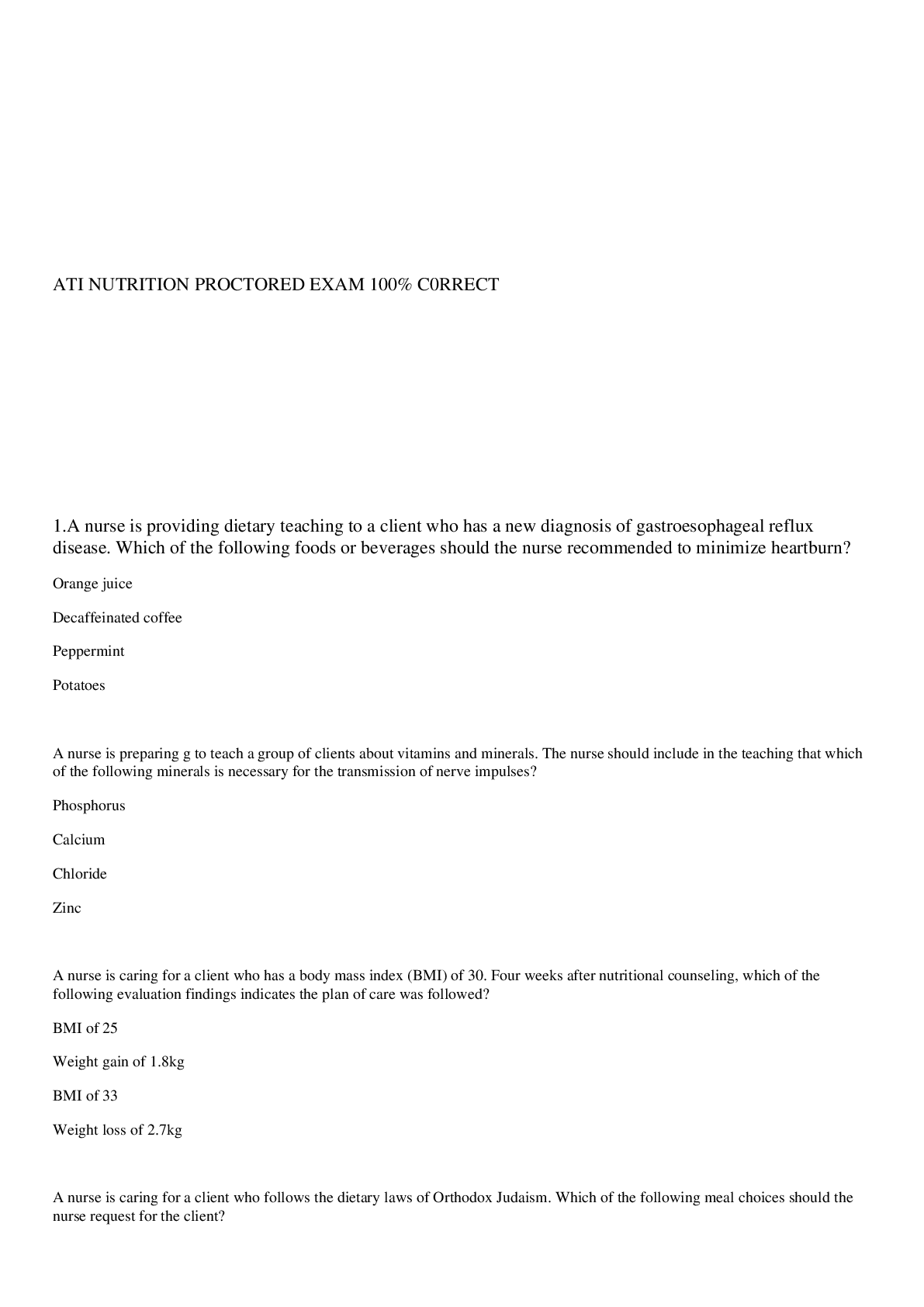
 (1).png)


